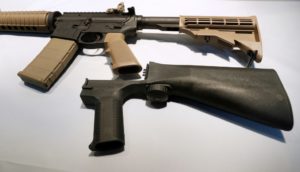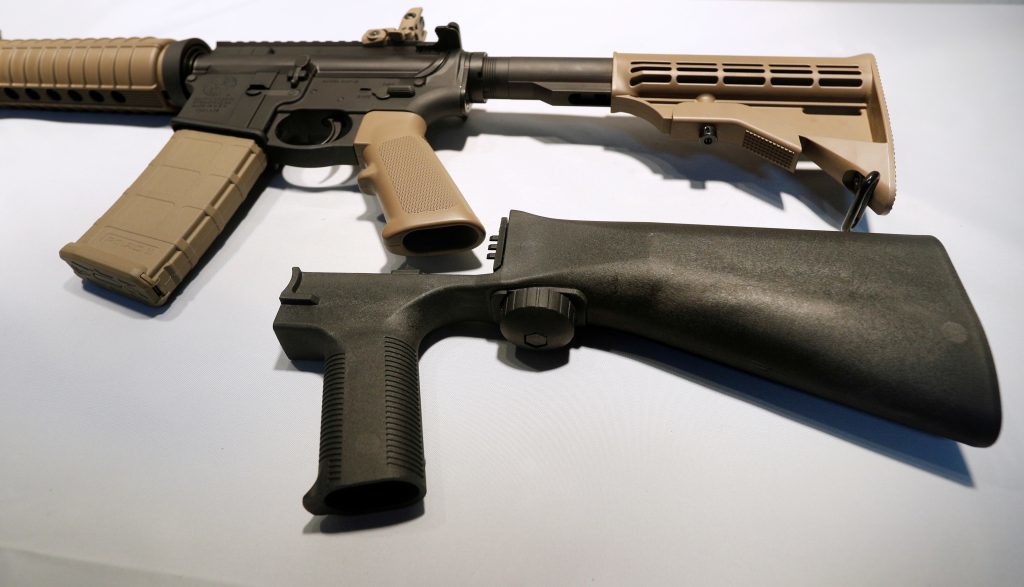On Feb. 20, President Donald Trump proposed a regulatory ban on devices that “turn weapons into machine guns.” After the 2017 Las Vegas shooting, the U.S. government has worked to revamp legalities revolving around bump stocks and other “full auto” gun modifications.
Bump stocks, or bump fire stocks, are a modification for a semi-automatic rifle. It is a gun stock that is not fully attached to the gun. When the gun is fired, it will recoil (“bump” back) and the main body of the gun will move backwards into the stock.

The trigger will then be hidden by the stock and reset to its natural resting position. The body of the gun will then move back forward, causing the trigger to be pulled by the user, thus firing the gun again. With this mechanism, these modified guns can achieve rates of fire between 400 to 800 rounds per minute.
Not all modifications are legal in the U.S., however, the Bureau of Alcohol, Tobacco, Firearms and Explosives ruled in 2010 that bump stocks were not subject to regulations and allowed their sale as an unregulated firearm part, keeping the ban hammer lifted off in the past decade.
After the shooting in Las Vegas, police found 12 bump fire stock devices at the scene. The National Rifle Association stated on their website on Oct. 5 that “devices designed to allow semi-automatic rifles to function like fully-automatic rifles should be subject to additional regulations.”
Currently, California, New York, Massachusetts and New Jersey are the only states that have banned the selling and possession of bump stocks. In Connecticut, Hawaii, Maryland, Michigan, Minnesota, Puerto Rico and Washington, D.C., the legal status of bump stocks is unclear.
To contact your home state senator or representative and express your opinion, go to senate.gov or house.gov respectively to learn more about how to get in contact with your representatives.

